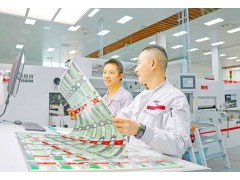As we gradually get rid of the global epidemic and continue to move forward, the packaging industry has developed into a new attitude and a new way of business to adapt to consumers. The packaging industry is facing new and continuous challenges. Packaging Gateway discussed the main trends shaping the future of the industry in 2022 and beyond, including advanced materials, artificial intelligence (AI), new epidemic, demography, direct to consumer (D2C), e-commerce, environmental and social governance (ESG), health and health, online food distribution and robotics.
COVID-19
The world has experienced the impact of the pandemic, and has prompted consumers to change their attitudes towards shopping. Concerns about viral contamination have led to increased use of non-contact delivery and disposable items. As the pandemic subsides, institutions such as the North London Waste Management Agency (NLWA) and the non-profit marine conservation organization Oceana Canada are calling for reducing the use of single plastics globally.
The report said that more attention must be paid to making consumers get rid of the "retrogression" of disposable goods, non refillable and non recyclable goods. The report also pointed out that investment in post consumption recycling infrastructure needs to be increased to meet the demand for reducing plastics at the United Nations Climate Change Conference (COP 26). Packaging suppliers must focus on the upstream to "face the future" their solutions. These actions achieve greater sustainability through ethical changes in the supply chain. Upstream fundamentally solved the problem of excessive plastic, rather than letting consumers deal with waste residues. According to GlobalData's consumer survey in the third quarter of 2021, 75% of global consumers said that "environmental issues" are very/extremely important. Therefore, people increasingly expect brands to prevent waste from the very beginning.
online takeout
The pandemic has accelerated the growth of online food delivery, causing people to pay more attention to packaging and its waste. New regulations and environmental appeal against disposable plastics are forcing enterprises to reconsider their packaging options. According to the report, catering service operators must consider cooperation with B2B packaging suppliers that provide reusable alternatives. The rapid growth of rapid commerce has established an on-demand channel for rapid delivery of a small amount of food. Some platforms such as Getir promise to deliver orders within ten minutes. The development of this model shows that convenience has become a commodity for time starved consumers.
Transport packaging must be developed to adapt to the huge acceleration of e-commerce, and ultimately compatible with home recycling systems. Packaging suppliers must try to reduce non recyclable secondary packaging, because consumers do not want or expect to bear the burden of post-processing. At the beginning of the epidemic, Amazon India began to use paper mats instead of plastic mats in all its operation centers, such as air cushions and foam packaging. These measures enable Amazon India to eliminate a large amount of plastic use while continuing to protect customer orders. Due to consumers' high concern about waste, disposable compostable takeaway packaging may gain more attention after the pandemic.
ESG
According to the report, many organizations "face the future" by acquiring companies compatible with the circular economy to avoid falling behind their competitors. With the government and environmental agencies calling for a ban on the use of disposable plastics, the report recommends that packaging suppliers must deploy comprehensive sustainable development plans that exceed ESG goals.
After the epidemic, people pay more attention to trust and accountability. According to GlobalData consumer survey in the second quarter of 2022, 78% of consumers around the world actively seek "sustainable/environmentally friendly" functions when purchasing. As consumers make more positive choices in their shopping habits, the "reuse and replenishment" program is increasingly popular.
In Europe, regulations support the development of refilling schemes, as the 2021 Disposable Plastics Directive aims to encourage waste reduction. The existence of the global recycling platform Terracycle's Loop in the UK, Japan, Canada and other countries/regions shows that reusable packaging has an appeal beyond national attitudes and emotions.
Advanced materials
According to the report, advanced materials have great advantages for consumer goods brands. In addition to plastic and cardboard, more and more innovative materials are opening up new potential applications for the packaging field. The report explains that in the UK, the National Graphene Institute has studied several new methods for using graphene and other two-dimensional (2D) materials in a range of applications, including food packaging.
3D printing is to build 3D objects from digital models. It plays a role in on-demand packaging and has the advantage of rapid prototyping. This growth trend enables companies to create packaging faster and at lower costs than ever before. Coatings that reduce decay, such as polysaccharide film, can also be used as an environmentally friendly way to extend the shelf life of fresh food. Advanced materials provide an alternative way to reduce waste and consider new resources. The soaring inflation and cost of living crisis made the cost of raw materials and energy soar, making packaging suppliers vulnerable soon after the epidemic. Today's low cost 3D printers provide manufacturers with the flexibility to try new ways of working, especially when dealing with prototyping.
Electronic Commerce
Due to the explosive growth of e-commerce during the epidemic, the importance of packaging visual effects has increased. During this period, consumers spend more time online than before. According to Global Data's 2020 epidemic so far consumption survey, Bao Gong showed that nearly a quarter of consumers (24%) spent more time browsing social media, and 69% avoided going to large supermarkets.
The combination of e-commerce and social media networks brings a seamless shopping experience. Social media is now a very important marketing platform for the entire consumer goods industry. According to the report, as the online model becomes more and more important, the company will take this opportunity to develop a more digital supply chain management system to help serve these and other channels. Therefore, packaging suppliers will need to work with brands and retailers to ensure that all stakeholders, from production to the final consumer, can be digitized.
artificial intelligence
By implementing artificial intelligence technologies such as machine learning (ML), companies can better standardize procedures and eliminate human errors. One trend theme is the use of robots to sort goods for recycling. The American Carton Recycling Industry Organization, the North American Carton Commission and AMP Robotics, a renewable energy semiconductor manufacturer, have jointly developed an artificial intelligence robot named Clarke. The robot is used to help the sorting process of cartons, plastic bottles and containers.
As AI systems use predictive analysis, AI improves supply chain management. The report states that "using demand forecasting tools, these AI systems can balance supply and demand, thus optimizing warehousing and inventory costs. Greater AI integration will enable retailers and manufacturers to respond more quickly to future opportunities and threats."
Demography
The packaging industry has seen that brands and manufacturers are seeking to improve the readability of labels and the ability of packaging to be suitable for older consumers without stigmatizing them. For example, the French bottled water company Wattwiller redesigned the bottle cap into the shape of a daisy flower, making its products easier to open. In the coming years, the intergenerational approach will be critical to creating successful product packaging to appeal to consumers of all ages.
D2C (direct to consumers)
As a result of the epidemic, the increase in home consumption and teleworking have become deep-rooted behaviors. According to the survey conducted by GlobalData in the third quarter of 2021, 22% of millennial and Z-generation consumers worldwide purchase beauty and beauty products directly from online brands. Apart from clothing, personal care products are the largest category of consumer goods purchased through D2C channels.
During the epidemic, Nestle UK also cooperated with the Deliveroo Essentials platform to adapt to the changing needs, which allows consumers to buy a series of groceries delivered to their homes online. This shows how the D2C channel enables brands to sell additional goods to existing customers, who usually lack the physical space to sell products. This also means that packaging is seen as the key to improving brand awareness.
Health and wellness
According to the consumer survey of the first quarter of 2021 conducted by GlobalData, three quarters (75%) of global consumers said that "packaging information or statements about production methods" were indispensable or happy to have them. Consumers pay more and more attention to transparency and hope that brands can clearly explain the benefits of ingredients on product packaging. The pandemic has prompted people to raise awareness of health. Therefore, brands are encouraged to describe ingredients such as probiotics, super food, CBD and plant based formula to attract consumers who pay attention to health.
robot
During the epidemic, the use of robots in the factory became a tool to protect the health of employees. Placing the robot in every other location helps to ensure that employees maintain sufficient distance to reduce the risk of infection. In the United States, Costco's highly automated chicken packing plant in Nebraska reported only one new case among 800 employees.
The use of collaborative robots in the factory is improving efficiency and helping to increase profits. Packaging and palletizing collaboration robots are used in a range of industries to optimize the fulfillment process of many tasks. According to the report, packaging robots can simplify production because they can improve more products at any time, improve packaging capacity and reduce labor costs.







